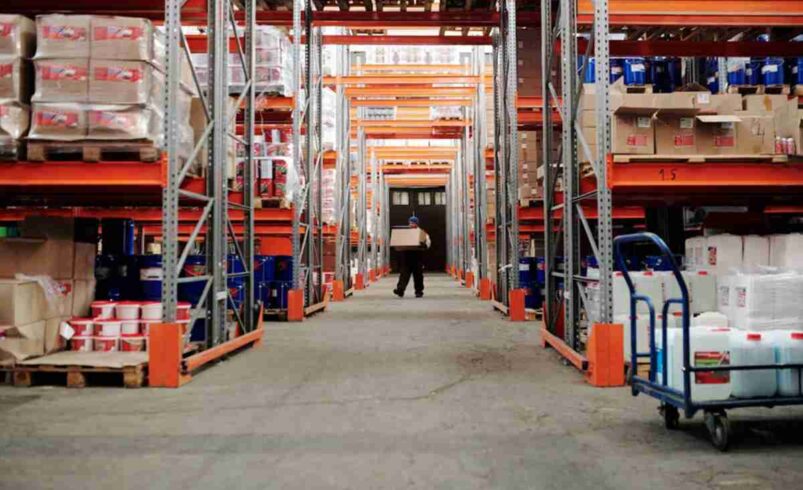Why Warehouse Safety Can’t Be Ignored
Warehousing is booming—employment has doubled from 645,200 workers in 2010 to over 1.3 million in 2020. By 2030, nearly 2 million people will work in warehouses.
But here’s the catch: with this growth comes higher risks of accidents and injuries. In fact, the U.S. warehousing sector reports an injury rate of 4.8 per 100 full-time employees.
That’s where guard rail kits come in—not just as safety barriers, but as lifesavers that prevent forklift crashes, pedestrian mishaps, and costly damage.
Why Guard Rail Kits Are Critical for Warehouse Safety
Warehouses are busy environments full of forklifts, heavy equipment, and fast-paced operations. Traditional safety protocols aren’t enough—physical barriers are a must.
- Prevent forklift collisions
- Reduce fall risks from elevated platforms
- Protect pedestrians in high-traffic zones
- Lower insurance costs & liability risks
Simply put, guard rail systems = safety + productivity + peace of mind.
Types of Warehouse Guard Rail Systems
Different facilities need different guard rails. Here are the most popular options:
- Steel Guard Rails – Heavy-duty, impact-resistant, perfect for high-risk areas.
- Polymer Guard Rails – Lightweight, flexible, and brightly colored for visibility.
- Modular Guard Rail Kits – Adaptable, easy to reconfigure as warehouse layouts change.
- Heavy-Duty Industrial Rails – Designed for extreme environments with reinforced strength.
Choosing the right guard rail type depends on warehouse layout, traffic patterns, and safety priorities.
Key Features That Make Guard Rails Effective
Not all guard rails are created equal. Look for:
- High Impact Resistance – Withstand forklift & equipment collisions.
- High Visibility – Bright colors, reflective strips for easy recognition.
- Modular Design – Reconfigure as operations expand.
- Weather Resistance – Withstand temperature shifts, chemicals, and humidity.
- Easy Installation – Quick setup without heavy disruption.
Installation Best Practices for Maximum Protection
Even the best guard rail won’t work if it’s installed poorly.
- Site Assessment – Identify high-risk zones.
- Anchor Point Strength – Ensure flooring can handle load.
- Correct Height & Spacing – Standard = 42 inches.
- System Integration – No conflicts with fire sprinklers, electrical, or material handling systems.
Pro Tip: Always hire experienced professionals for installation to avoid safety loopholes.
Cost-Benefit Analysis of Guard Rail Systems
Think guard rails are just an expense? Think again—they’re a high-ROI investment.
- Direct Savings – Lower insurance costs, fewer accident claims.
- Operational Efficiency – Better traffic flow, less equipment damage.
- Long-Term Value – Durable systems last decades with minimal maintenance.
Accidents cost thousands of dollars per incident. Guard rails cost a fraction and prevent them altogether.
Maintenance = Long-Term Safety
To keep protection strong:
- Monthly Inspections – Check for damage or loose parts.
- Quarterly Assessments – Evaluate connections, structural integrity.
- Immediate Repairs – Replace damaged rails immediately.
- Proactive Component Replacement – Don’t wait until failure occurs.
Final Thoughts: Don’t Wait for an Accident to Take Action
Guard rail kits are more than just barriers—they’re safety investments that protect lives, reduce risks, and improve efficiency.
The real question isn’t “Should we install guard rails?” but “When will you install them?”
The smartest warehouse leaders act now—before accidents happen.
FAQs About Warehouse Guard Rail Kits
Q1: Are guard rails required in warehouses?
Not always legally, but they’re strongly recommended for OSHA compliance and worker protection.
Q2: How do I know which type of guard rail to choose?
Consider your traffic patterns, equipment types, and risk zones. High-impact areas = steel; flexible zones = polymer.
Q3: Do guard rails really reduce insurance costs?
Yes! Fewer accidents = lower claims = reduced premiums.
Q4: How long do guard rail systems last?
High-quality steel or modular systems can last decades with proper maintenance.
Q5: Can I install guard rails myself?
Small kits, yes. For large warehouses, always use professional installers for maximum safety.

